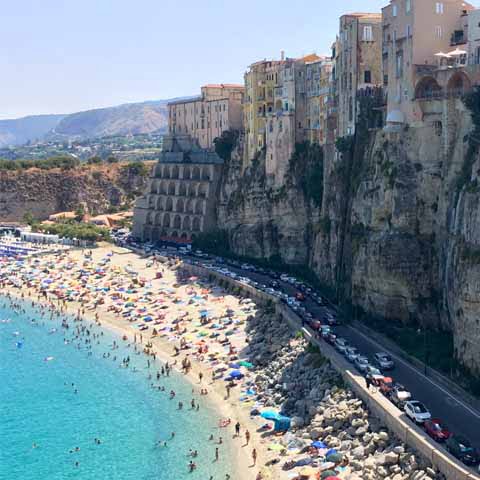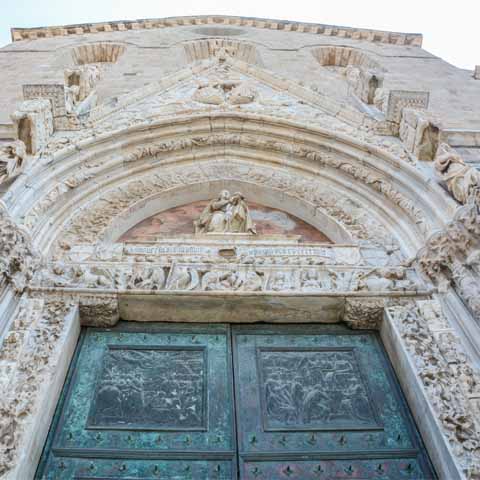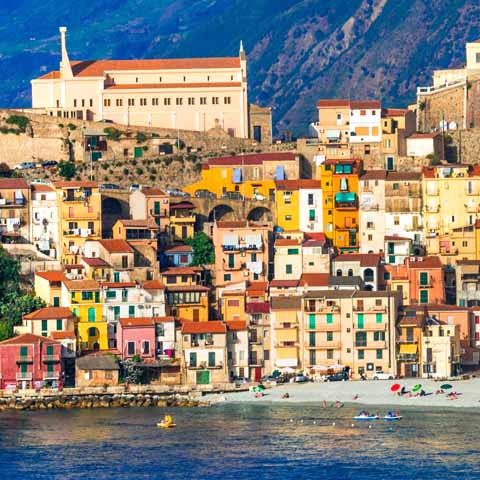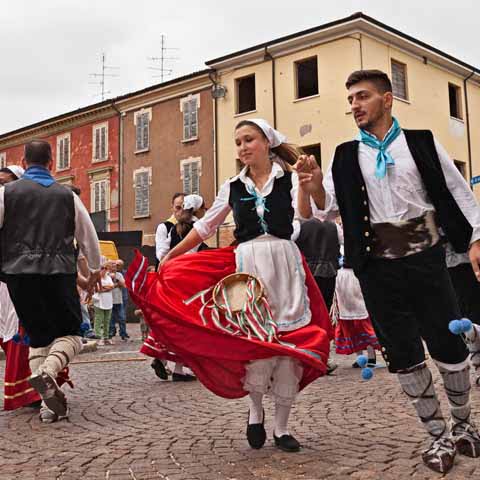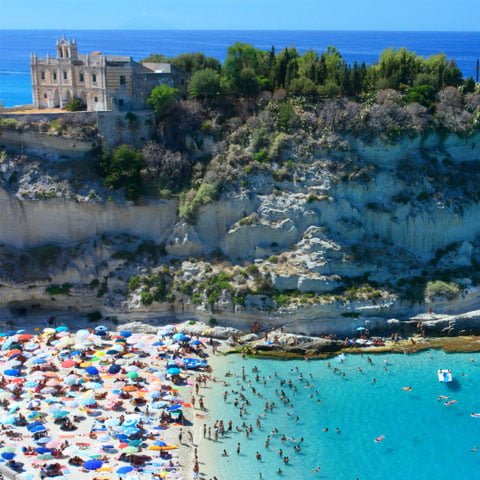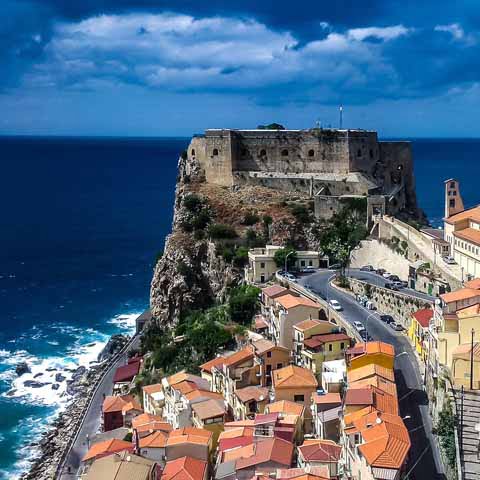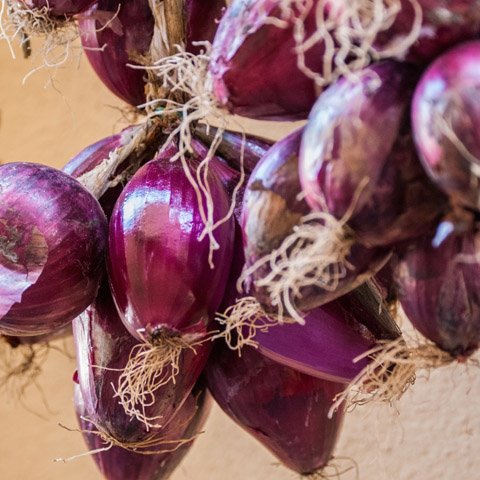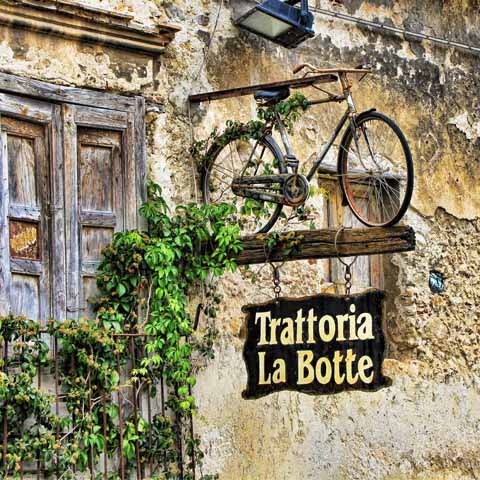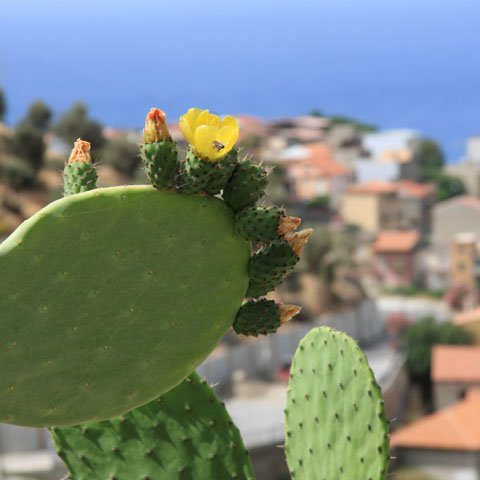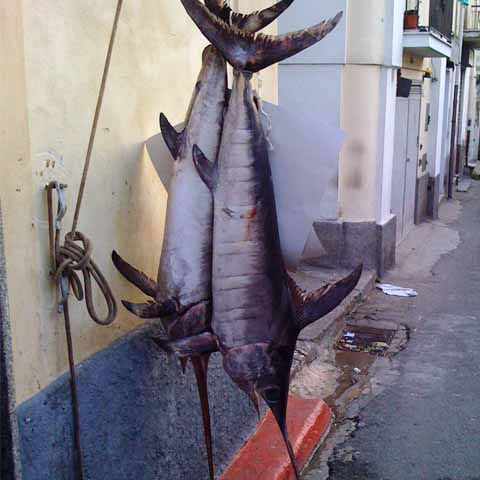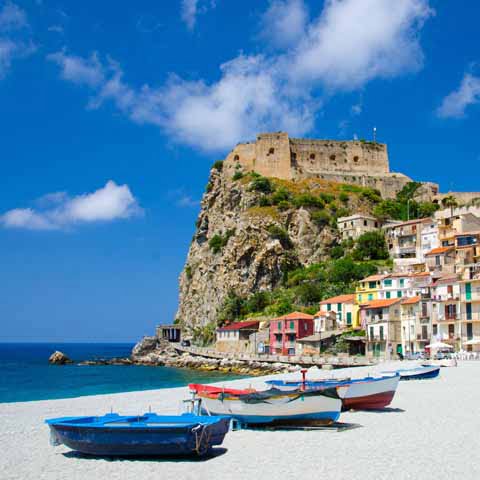Calabria Travel Guide
As one of the top tourist destinations in Europe, Italy is full of lush landscapes, rugged mountains, and beautiful beaches, but perhaps none are closer to their original and natural state as they are in the quiet and picturesque region of Calabria in southern Italy.
Although the region lures tourists year-round with its rich history and striking topography, the area is less industrialized than other parts of Italy. Ironically, this is one of the main selling points of a trip to Calabria, which was ranked number 37 by The New York Times on their “52 Places To Go in 2017” listing.
The more than 480 miles of pristine coastline that combine sandy beaches with craggy mountain ranges adjacent to the Ionian and Tyrrhenian seas are among the purest forms of Mother Nature the country has to offer. Renowned poet Gabriele D’Annunzio was so moved by the scenery that he once called the section of the Calabria coast facing Sicily as, “the most beautiful kilometer in Italy.”
The region is rich in history and culture, with the Province of Cosenza being the heartbeat of traditions and the arts. Cosenza is home to one of the largest university campuses in the nation, the Teatro Rendano for theater arts, and the Brettii Museum.
Grand yet intricate architecture can be found sprinkled throughout the interior of Calabria as well as the coastline. Monasteries, churches, medieval castles, and towers are just some of the structures from the Norman and Aragonese periods that will captivate the imagination and transport visitors to another time.
The cuisine of the region is primarily based on meat, fish, vegetables, and pasta, and it is more common than not for the dishes to incorporate spices that impart a little kick. Not wanting to waste a morsel, the people of Calabria painstakingly preserve their food and vegetables by packing them in olive oil for storage. To dine in this region is to taste the true heart of Italy.
Calabria is believed to have one of the oldest records of human inhabitance in all of Italy, dating back to 700,000 BC. Since that time, the ensuing occupants have all left their mark on the land. The cliffside Paleolithic Bos Primigenius figure of a bull, the Neolithic villages, and the Medieval architecture are all evidence of their influences.
Geography
Calabria is affectionately referred to as the toe of the boot formation we know as Italy. The region is actually a narrow peninsula that is approximately 248 miles long and a maximum of 68 miles wide and offers 480 miles of coastline. It is home to roughly two million people living in five provinces: Cosenza, Reggio Calabria, Crotone, Catanzaro, and Vibo Valentia.
Basilicata borders the region on the north, while the Ionian Sea lies to the east and the Tyrrhenian Sea to the west. Most of the region is divided evenly between mountainous and hilly terrain, with less than 10% of the remaining land accounting for plains.
The mountainous part of Calabria consists of three primary mountain ranges: La Sila, Pollino, and Aspromonte. Each mountain range is somewhat diverse in offerings, but all three are home to national parks that honor the area’s natural beauty.
La Sila mountain range, sometimes referred to as the Great Wood of Italy, is aptly named for its dense forests. This range boasts some of the tallest trees in all of Italy that are as high as 130 feet tall and are known as Giants of the Sila. The numerous trees and lakes contribute to Sila National Park having what is thought to be some of the purest air in Europe. The mountain range in central Calabria stretches for roughly 770 square miles, with the highest point being Botte Donato which is 6,325 feet tall.
In the north of the region, the Pollino Massif virtually separates Calabria from the rest of the country. The mountain range is heavily wooded for the most part but some plateaus with little vegetation can be found among the peaks. The Pollino National Park is the largest in Italy, covering more than 740 miles, and is home to the Bosnian Pine, a rarity.
The Aspromonte is an unusually compact group of mountains found on the southernmost tip of Calabria. The range’s highest mountain peak is Montalto, which reaches a staggering 6,414 feet and features many large, man-made terraces that slope down towards the sea.
Much of the lower terrain has roots in agriculture that are still prospering today. Calabria has the second highest number of organic farmers in the country. The olive tree accounts for almost three quarters of tree crops, making it the second highest olive oil producer. Also growing in the lowlands are chestnut trees, prickly pear cacti, and citrus fruit.
The region is surrounded by water on three sides offering miles of coastline.
The Tyrrhenian Sea borders the region’s west side, the Ionian Sea borders the east side, and at the very southern tip Calabria is the Strait of Messina which separates the region from Sicily. The seas are clear and inviting making many of the region’s most sought after tourist destinations seaside areas.
Climate
This small peninsula’s climate is almost entirely affected by its proximity to its interior mountains and seaside boundaries.
The coastline experiences a mainly Mediterranean climate with an annual low of 46 degrees Fahrenheit and a high of 86 degrees. The coast has a decent difference in temperatures between winter and summer.
The unpredictable Tyrrhenian Sea weather can at times bring heavy rains to the west coast. The east coast is generally warmer than its western counterpart, primarily due to its proximity to the hot air of Africa.
The mountainous areas of Calabria have a typical mountain climate that sees frequent snow in the winter. They control the weather in the area a great deal by working in tandem with the Tyrrhenian Sea to create more rain fall in the western parts of the region primarily in autumn and winter.
When in Calabria
Visitors would be remiss to exclude Tropea from their itinerary. This simply stunning beach town is located on the west coast of Calabria in the Province of Vibo Valentia. This town features two and half miles of gorgeous sand beaches that slope into the sparkling blue waters of the Tyrrhenian Sea. When you’re not basking in the sun or snorkeling, be sure to visit the beautiful hillside 6th century Benedictine monastery called Sanctuary of Santa Maria dell’Isola. Additionally, do not miss your chance to wander the cobblestone city streets lined with unique restaurants and shops. Word of this enchanting town is spreading fast with Fodor’s Travel naming Tropea one of the best secret beach towns of Italy in 2018.
The villages near and around Aspromonte National Park offer a truly unique experience. Tour the quaint hilltop villages reminiscent of Medieval architecture while taking in the chestnut tree groves and flowing waterfalls of their surroundings in between. Take advantage of the area’s superior hiking trails and do not leave without dining on a traditional dish of lamb, a tourist favorite.
For history buffs and fairy tale connoisseurs alike, the Ducal Castle of Corigliano Calabro located in the Province of Cosenza is quite possibly one of Italy’s most magnificent pieces of architecture to behold. Though renovated and altered since the 15th century, the castle was originally built in the 11th century. The tower and wrought iron hand rails found around the exterior of the castle seem to be straight out of the pages of a child’s fairy tale book. The view from the castle of the city below and the Ionian Sea stretching out into the distance is breathtaking. However, to base the beauty of the castle only on its exterior would be a grave mistake as the ornate and intricate architecture and paintings of the interior are astounding to say the very least.
A leisurely drive along the famous coastline of Calabria is not a bad way to spend the day either. The SS18 Napoli-Reggio runs almost the length of the west coast, providing dazzling views of mountains and the Tyrrhenian Sea. The SS106 Reggio-Taranto roadway runs most of the length of the east coast and provides an equally stunning view. Pack a picnic lunch and make a day of touring the natural wonders of Calabria. When you get close to the halfway point, take a few minutes to see the Gioia Tauro, the largest seaside port in Italy and one of the largest in Europe.
The untouched beauty of the region of Calabria is truly a treasure to experience. If planning a stay here, be sure to give yourself several days to enjoy some of Italy’s best kept secrets tucked away in this southern region. Whether you choose to bask in the sun along the pristine beaches of Tropea or hike through ancient villages built into the hillsides, there is no shortage of things to see and do. To vacation in the splendor and beauty of Calabria is to dwell amidst what so many rightly consider to be a little slice of heaven here on earth.
Travel Guides
